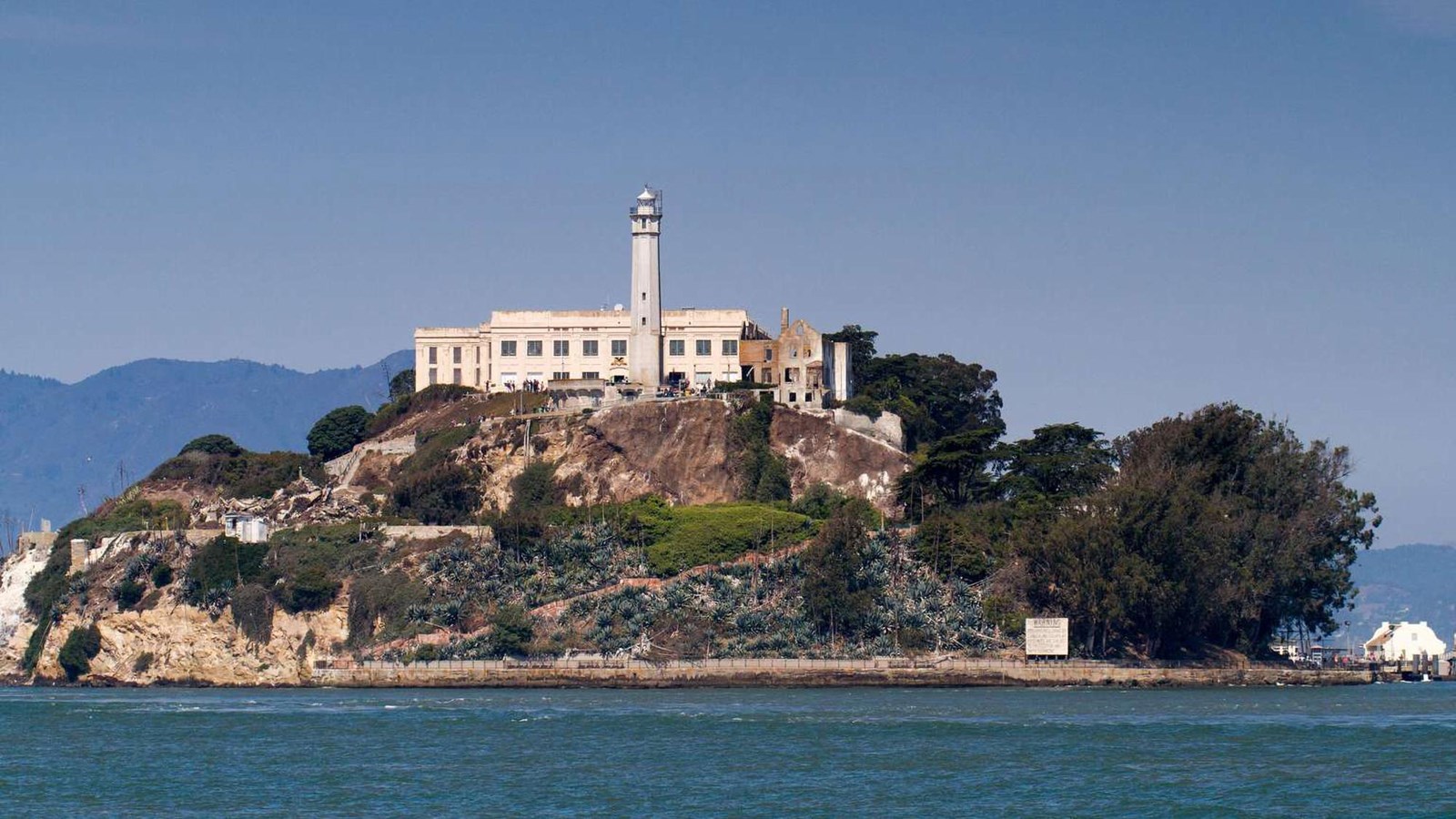Last updated: December 30, 2022
Place
Alcatraz Island

Mel Mashman
Accessible Rooms, Accessible Sites, Assistive Listening Systems, Assistive Listening Systems - T-Coil Compatible, Baby Changing Station, Benches/Seating, Braille, Captioned Media, Cellular Signal, Elevator, Ferry - Passenger, First Aid/Medical Care Available, Gifts/Souvenirs/Books, Historical/Interpretive Information/Exhibits, Information - Ranger/Staff Member Present, Restroom - Accessible
From its early days as a military fortress and prison to its most infamous tenure as a federal penitentiary, Alcatraz looms large in the American psyche as a place of contradiction, violence and competing historical narratives. Today its modern incarnation as a cultural attraction offers many opportunities to experience the past and influence the future.
Welcome to the Rock!
Getting to the RockAlcatraz is a short ferry ride from Pier 33 in San Francisco. Book your ferry ride to the Rock with Alcatraz Cruises. Everyone wants to come to The Rock and tickets often sell out, so book as early as possible. Tickets for the ferry ride and cellhouse audio tour are available at Alcatraz Cruises or call 415-981-7625. Group reservations for 15 or more can be made at 415-438-8361.
Military Period
For nearly 80 years, Alcatraz island was the site of the first US fortress and military prison on the West Coast. Beginning when the island was designated as a disciplinary barrack in 1868, most prisoners were US military personnel, but some notable exceptions included southern sympathizers during the Civil War, WWI conscientious objectors and Native Americans.
Bureau of Prisons
In the 1930s, the federal government developed a new type of prison for the nation's most incorrigible bad boys. The facilities at Alcatraz were modernized to become a maximum-security, minimum-privilege penitentiary specially designed for inmates that other prisons couldn't contain or control. During its 29 years of operation from 1934-1963, more than 1,500 convicts were incarcerated here.
We Hold the Rock
From November 1969 through June 1971, Alcatraz was taken over by Native American activists who called themselves Indians of All Tribes. The protest drew attention to the plight of native peoples across the US. Many lived in severe poverty on reservation land and faced serious discrimination from the greater US. The activists, many of whom were students who'd relocated to the Bay Area, selected Alcatraz for the occupation because it was surplus government land. It also had the distinct practical advantage of being difficult for federal authorities to access.
The dramatic nature of the occupation was effective in capturing national attention, especially since it was an on-going action that dominated TV news for several months. The takeover resulted in a series of federal reforms with regard to the treatment of American Indians.
According to the architects, the most significant impact of the occupation was to galvanize the reconnection of Native Americans to their cultural roots. The activists who first arrived on Alcatraz called for a pan-Native occupation, inviting any and all native people to join them on the island, which is exactly what happened. All the activists lived communally, some for the entirety of the occupation. In this way, a community formed that gave rise to personal bonds and cultural exploration that lasted long after the occupation was over.
The success or failure of the occupation should not be judged by whether the demands of the occupiers were realized. The underlying goals of the American Indians on Alcatraz were to awaken the American public to the reality of the plight of the first Americans and to assert the need for American Indian self-determination. As a result of the occupation, the official government policy of termination of tribes was ended and a policy of American Indian self-determination became the official US government policy. Alcatraz may have been lost, but the occupation gave birth to a political movement which continues today.
From prison to tourist attraction
In 1972, Alcatraz was added to the newly created Golden Gate National Recreation Area and was opened to the public in 1973 as a historical landmark.
